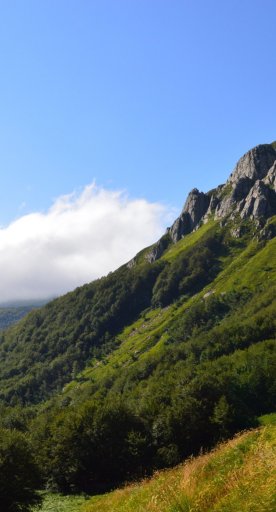
Former Augustinian Convent complex in Fivizzano
A treasure chest kept in the heart of Lunigiana
Set in the historic center of Fivizzano, the large Augustinian Complex preserves the histories and memories of the city, gathering in one place numerous stories of Fivizzano's identity, among Renaissance cloisters, very rare ancient books, scientific relics and art masterpieces.
The Convent was founded by Fra Giacomo da Montalcino at the behest of Nicolò Malaspina in 1392 and, for centuries, remained a point of reference for the religious and cultural life of Fivizzano. Unfortunately, it was suppressed in 1786 by the Grand Duchy of Tuscany and then became a women's conservatory and cloistered monastery.
Today, in this fascinating place still decorated with wonderful seventeenth-century frescoes, numerous exhibition spaces have been set up, open to the public through free guided tours.
The Civic Library

The Library preserves over 30,000 books among which the numerous volumes of the ancient collection stand out for their importance and prestige, incunabula and cinquecentine, realized between the 15th and 16th centuries with the movable type technique, of which the printer Jacopo da Fivizzano was one of the first masters in Italy.
Edmondo Bernacca Meteo-Museum
Unique in its kind, the museum collects relics and instruments used by one of the most famous figures of Italian meteorology, Colonel Edmondo Bernacca, who lived for a long time in Piazza Medicea in Fivizzano.
Forerunner of knowledge in the meteorological field and excellent communicator, Bernacca understood the importance of dissemination linked to climatic phenomena which today represent a central theme for all humankind.
The Council Hall and the Museum of Sacred Art
The building, now rebuilt, houses the Council Hall of the Municipality of Fivizzano and the Museum of Sacred Art, in the ancient spaces of the Church of San Giovanni built in the 14th century, a treasure chest of works of art and riches.
Among them it is possibile to admire the tomb of Fra Leonardo Valazzana , theologian and preacher, who read the famous letter of excommunication against Girolamo Savonarola in the church of Santo Spirito in Florence in 1497.
Further enriching the entire complex of the former Augustinian Convent is the ancient cloister, decorated with wonderful 17th century frescoes by Michele Angelo di Fivizzano which narrate some moments in the life of Saint Augustine and which were restored just last century.









